- Schubert: Winterreise
- Cornelius H Edskes
- ECM Records
- Wendy Warner
- Nicholas Hodges
- The Pianistic Crown
- Van Cliburn Competition
- Langgaard: Symphony No 4
Avian Humanoids in the Park
KEITH BRAMICH takes a guided walk with a difference
Classical music's relationship with the mobile (cellular) phone is changing. Perhaps the days of strict formal announcements at the start of concerts about turning off all phones and other noisy devices are now over, as trendier music promoters try to make their events more attractive to younger audience members.
Amsterdam's Oosterpark (Eastern Park) in the Netherlands is a large municipal park in the English style, dating from the end of the nineteenth century. Located in a culturally diverse part of the city, it was Amsterdam's first big municipal park. Full of trees and home to many wild birds, it's based around a large lake.
On a fine Sunday afternoon, 25 August 2024, in this park, a small, select group of walkers met in the sunshine, in front of the park's Music Dome, for a guided walk. But this was no ordinary guided walk. Everyone came prepared with a GPS-enabled mobile phone, headphones and a SonicMaps website link for an hour-long experience that combined fresh air, the sights and sounds of the park, classical (and other) music, the latest technology and some of the world's strangest mythical creatures.
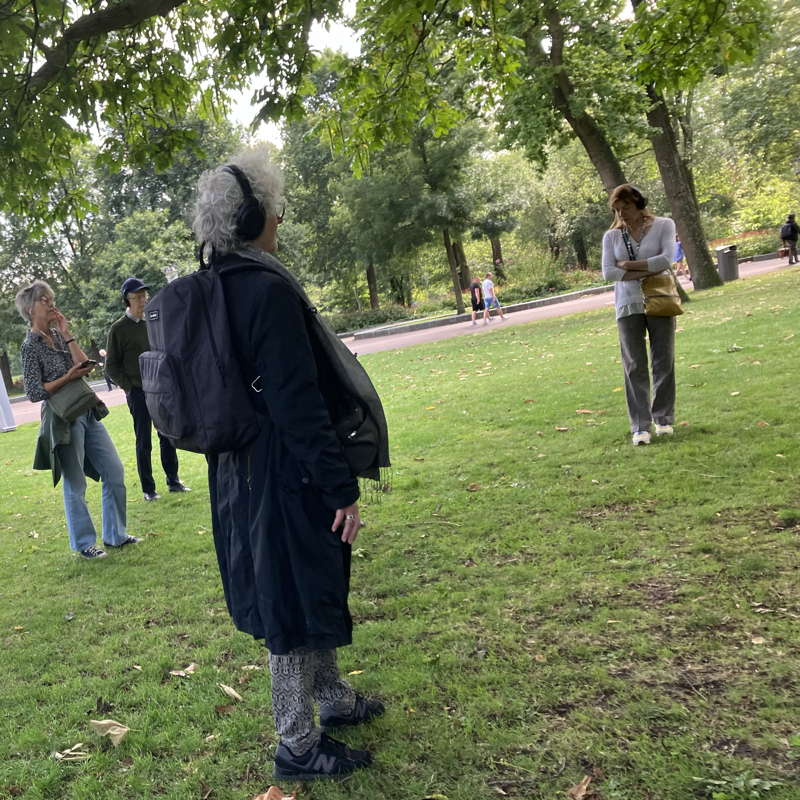
Some participants of Evelien van den Broek's
Avian Humanoids sound walk.
Photo © 2024 Daniel Schorno
Avian Humanoids is a five-centre sonic walk created by Dutch musician Evelien van den Broek - a composer, performer and producer based in Amsterdam, who creates electronic and electro-acoustic music for live performance, film, modern dance theatre and sound walks.
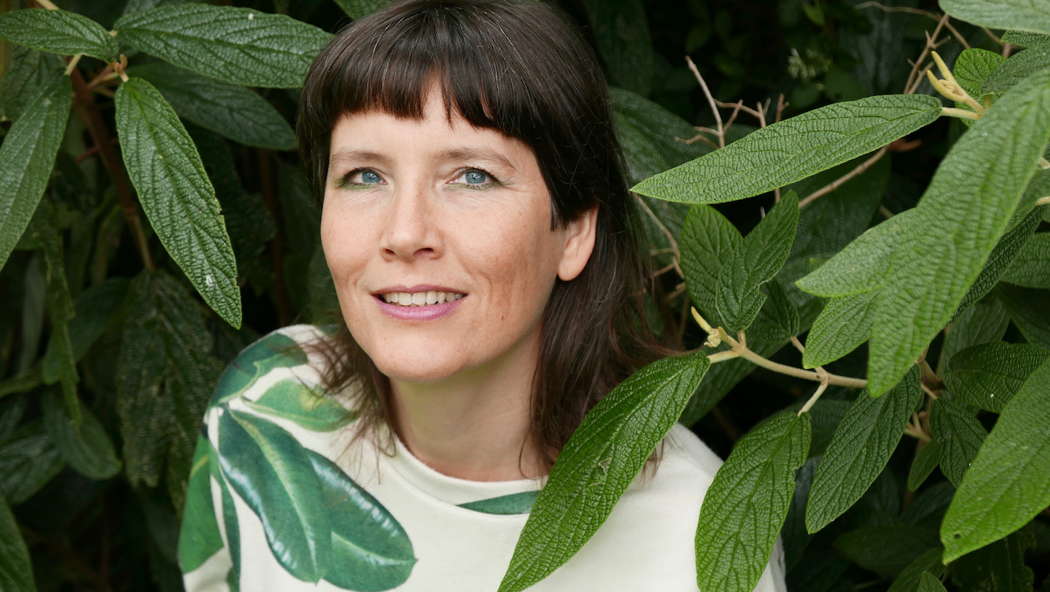
Evelien van den Broek
She describes this event as follows:
Avian Humanoids is a supernatural soundwalk. You walk from tree to tree, to five special trees ... As soon as you stand under it, the tree comes to life, you hear the rustling of leaves and the fluttering of wings. This is not just a park, these are not just trees. The Avian Humanoids live here. Part human, part bird. They start singing in the tree.
In some ways the principle is quite simple. Walking through the park between each special tree, Van den Broek explained the next location and the creature that we would hear. We walked around the park together, with Van den Broek as our guide, and on arriving at each of five specifically chosen trees, an audio soundtrack created by the composer was played through each person's headphones, and our mobile phones also displayed a short description of each recording. When we moved away from each tree, the sound stopped.
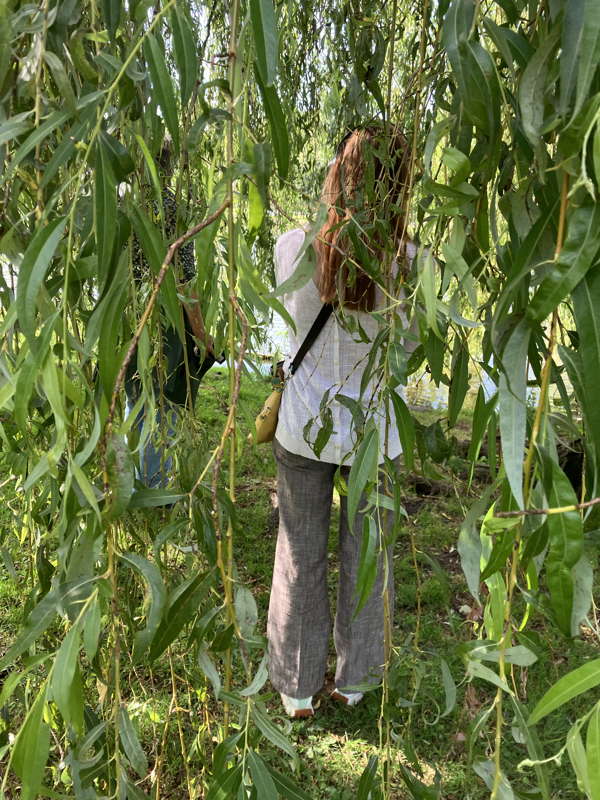
Experiencing Evelien van den Broek's
Avian Humanoids sound walk.
Photo © 2024 Daniel Schorno
But this very prosaic description of the event in no way describes my experience. Firstly, the audio played through our headphones mixes sounds of the portrayed creatures with other sounds recorded in the park. Sometimes this adds to the mystery ... we heard trams coming past on the road near to one tree, but one of these was an invisible tram, heard only on the recording. Another example is that the final tree was near to a fountain in the lake, and the sound of the fountain could also be heard on the recording.
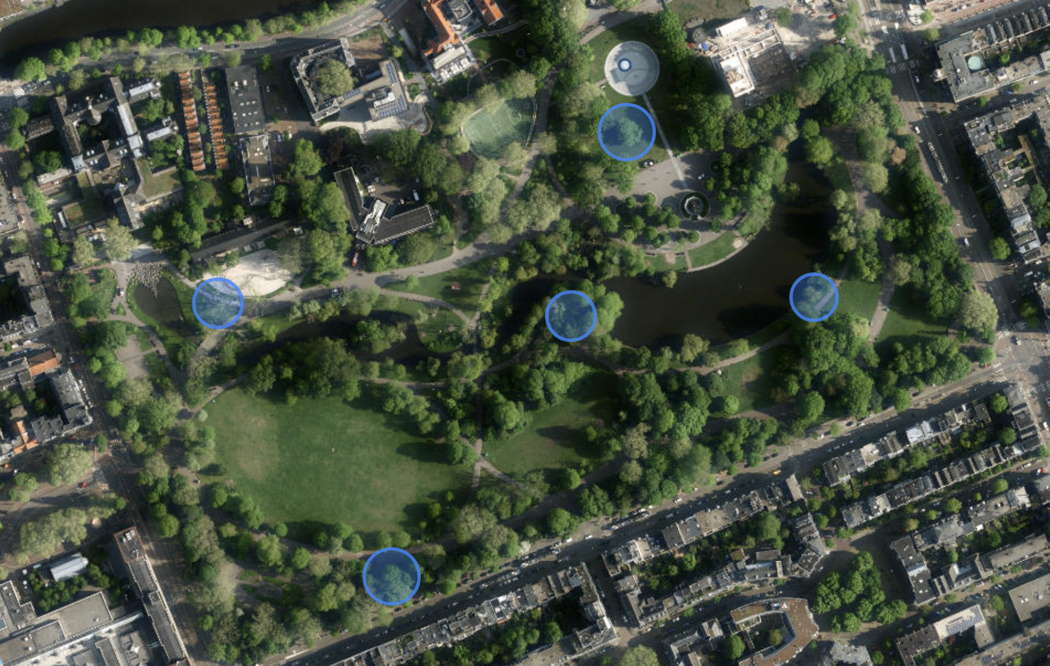
A screenshot from the SonicMaps website showing Amsterdam's Oosterpark. The five blue circles show the locations of the five trees which provide the focus points of Evalien van den Broek's sound walk. SonicMaps is a system created by RecursiveArts, an independent development studio, which 'turns traditional maps into fully interactive audiovisual experiences to transform your sense of place'.
These natural sounds, recorded near to each spot where I stood, somehow created a bridge between the creatures portrayed aurally and my own physical location.
Another effect this walk had on me was to increase my sensitivity to all the visual experiences around me, so that when a real bird jumped into one of the trees or a breeze began to move the branches of another tree, this all became part of the experience.
Then there's the effect of the music itself: human singing, changed with electronics so that each voice could become the creature being sung about, and could move around in the soundscape, as if up in the tree above our heads. Special techniques used included pitch transformations, harmonizers and granular effects.
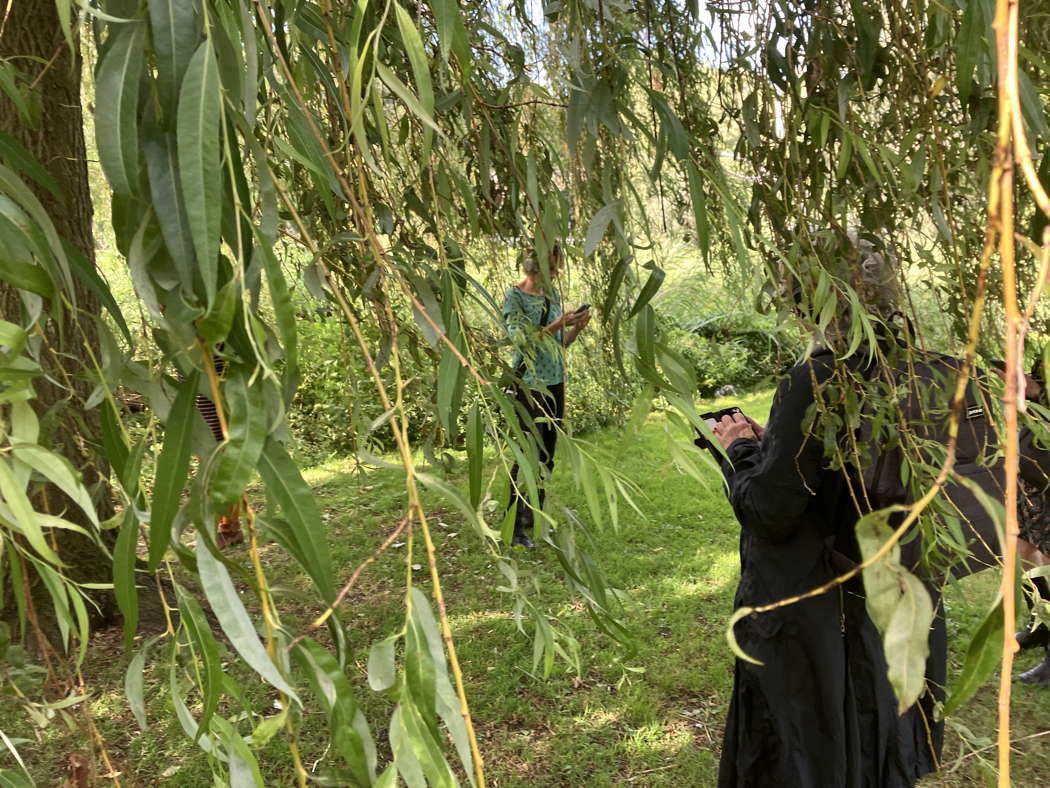
Immersed in the Avian Humanoids sound walk. Photo © 2024 Daniel Schorno
What about the mythical creatures themselves? They come from various traditions. The Hindu and Buddhist Kinnari / Kinnara, sung here by Dutch-Tanzanian soprano Nienke Nasserian Nillesen, probably come from the Himalayas - part human and part bird - looking after us when there's danger or trouble. At first I thought that there was an uncredited extra male voice singing here, but Evelien van den Broek assures me that the male here is Nienke Nillesen's voice, pitch-shifted.
The Japanese shintu demon Tengu - a kind of bird of prey or monkey, perhaps disruptive, perhaps protective - is sung by actor and singer Kevin Walton, who, after welcoming the wanderer, poses a series of five riddles, for us to guess, each time asking 'what am I?' or 'who am I?'
Possibly the strangest creature of all, the ancient Egyptians believed that the human soul consisted of several different parts. Ba, the essential personality which would survive after a person's death, and sometimes depicted as a human-headed bird flying out of the tomb, is sung by the composer, Evelien van den Broek, who also trained as a classical singer.
Half bird and half maiden, harpies, from ancient Greek and Roman mythology, and often featuring in the poems of Homer, are potentially evil creatures, stealing food (and sometimes people) and perhaps personifying storm winds (which we hear in the background). These are sung by Dutch vocalist, performer and songwriter Stefanie Janssen. At the end, we hear an emergency vehicle passing, perhaps investigating a suddenly missing person ...
Finally, as we arrive at a tree near the fountain in the lake, Gamayon, a prophetic bird from Russian folklore, looks down from above to observe the mess we're all making of our lives. This is sung by German-based Dutch bass-baritone Timotheus Maas. At times I feel he's laughing at us from his tree; at others, the sounds here are menacing like a roaring lion.
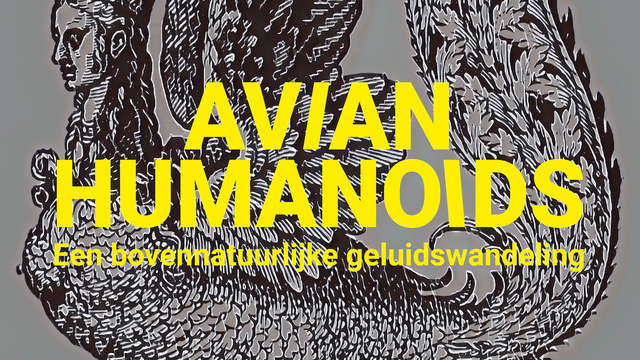
Avian Humanoids - Een bovennatuurlijke geluidswandeling (a supernatural sound walk). Image © 2024 Evelien van den Broek
In one sense, of course, you've missed this live event last Sunday, but if you happen to be in Amsterdam's Oosterpark at any time until the end of October 2024, you can still experience the Avian Humanoids sonic walk for yourself, except for Van den Broek's personal introductions, via the sonicmaps.xyz/player/?p=1378 web address. If you're not anywhere near Amsterdam, you can still use this web address to experience the sound recordings, again only before the end of October 2024, although without the live visual element of being in the park. If you're reading this later than October 2024, look out for a re-run of Avian Humanoids in summer 2025. You can also find out what Evelien van den Broek is up to by visiting her website at evelienvandenbroek.com
I would definitely recommend experiencing Avian Humanoids if you can. They're complex, weird, wonderful, and expertly constructed and sung. I used to think that no-one could really know what a tree was until they had fallen out of one, as I once did, but now I'm not so sure!
Copyright © 28 August 2024
Keith Bramich,
Amsterdam, Netherlands





